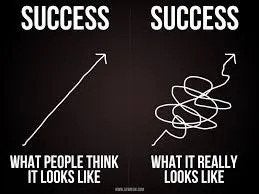
You are building a puzzle. You do not have all the puzzle pieces when you begin. The puzzle cannot be completed without the slow process, taking over a year’s time, as development gives you more pieces to continue building the puzzle.
Trying to train a puppy as if it were an adult dog is like jamming pieces of the puzzle together to force them to fit. Not only will it make a mess of the puzzle, it will leave blank spots or discarded pieces in the end. Work with the pieces in front of you and wait to receive the developmental pieces as they come. You may want a plan or strategy like grouping color groups or doing the border first, but what if that’s not the way you receive your developmental pieces?
I have been working with people to understand the animals in their charge for more than 35 years. Every dog/handler team is a unique puzzle. I ran a government program using non-expert volunteers to raise dogs for governmental detection jobs. We ended up working with thousands of volunteers spread all over south-central Texas. We raised dogs under three distinct models; foster raised, kennel raised, and prison raised. There were general assumptions observed over those groups, but there was a greater amount of individual variation. One of my most successful foster families followed very little of the advice offered and raised a disproportionate number of successful dogs. THAT was an exception, not the rule. The domestic dog’s resilience to survive and adapt is always more impressive than our ability to harness those abilities. This is why we see more new uses for working canines as time passes. The path is rarely a linear process of A>B>C>B….. it is a dynamic process of adapting and changing based on what is happening in front of you.

1. Work with what you see in front of you. Adapt your weekly exercises according to your observations of how the dog reacts.
2. Keep in mind what the day to day experiences of a detection dog in law enforcement must look like. (it is not an eight hour day of searching boxes in straight organized rows) The dog must travel, relieve itself, work in environments filled with distraction, deal with hunger, thirst and other biological demands, rest, and adapt to changes in weather/temperature. The dog cannot be a risk to itself/its handler/public, and the dog should be able to accommodate life when not on duty (kennel, home, crate).
3. The dog must have the conditioning and health to complete its task.
4. The only way to see trends in canine performance is to record the observed behavior.
5. Remember that we are creating behavioral pathways for detection work. Over-emphasizing behavior off that pathway may have consequences. A puppy raiser thought it was funny to watch their pup chase a laser pointer dot. Tired puppy with minimal effort, seemed like a great plan. The dog grew up to be obsessed with any blinking lights!
6. Network your experience collectively with the program experts and participants. The most successful dogs come from homes with large support groups offering ideas and observations of the work you do with the puppy.
7. Emphasize a balanced approach to weekly activity-
· Do not fall prey to the trap of endless searches, especially for the first 6 months.
· Build up all the dog’s strengths, don’t just focus on the most obvious part of detection work.
· Reward possession to the point of addiction.
· Environmental stability where the pup is at ease in any distracting environment.
· A dog that is socially comfortable in situations with other animals and people (crowds of people). The dog must learn that he does not interact with every stranger or new animal in the working environment.
· The dog needs the physicality and proprioception to conduct a full search in any given area.
· The independence to be self-motivated and looking forward to self-reward. If you have to show the dog where the object is hidden, you set the dog up to fail and now make the handler far too much of a solution to the problem. Take a step back and make it easier for the dogs to succeed independently.
· Control and obedience work can lessen the dog’s ability to work independently from the handler.

